Microfluidic Innovation for sperm sorting (MFSSI)
Latest techniques for managing sperm DNA fragmentation
Assisted reproductive technologies are very important tools to deal with infertility. About 50% of cases of infertility are due to male infertility, that’s why sperm selection is important for its use in IVF, ICSI and IUI.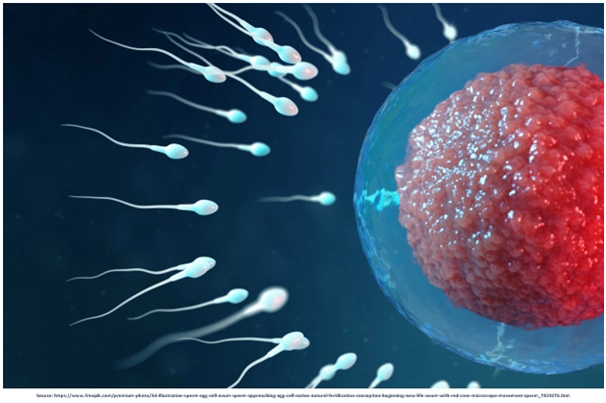
The currently available methods for sperm sorting are expensive, labor-intensive, and technician-dependent.
Microfluidic chips play a crucial role in biology and medicine. Owing to their micron-sized features and the possibility of sample manipulation and application of external stimulants, e.g.: acoustic waves, chemotaxis, and thermotaxis, it allows for processing low volume samples in a fast 10 minutes, low-cost fashion.
Infertile men tend to have a higher ratio of abnormal sperms morphologically and with higher DNA fragmentation rate, a new technology was introduced to overcome this issue, it’s called fertile ultimate sperm sorting chips.
Fertile ultimate sperm sorting chips are chips that extract sperms with better morphology and DNA quality i.e.: removing low quality sperms. This method increased the non-fragmented sperm count from 45% to 98%.
**Does using this technique cause physical harm to sperms?
The answer is no, it is completely safe.
**How does it work?
- Semen sample given by male partner
- Sample is inserted into centrifuge device to separate sperm cells from seminal fluid
- Sperm cells are injected into the chip canal
- Healthy sperms swim into the other end of the canal and are separated from dead or damaged sperms
**what distinguishes the fertile ultimate sperm sorting chip from other methods of sperm sorting (density method, swim up method)?
Other methods select sperms based on better motility and better morphology, the chip technique also chooses sperms with less DNA fragmentation and least exposed to free oxygen radicals which was proven by studies to affect sperm health and ICSI success rate.
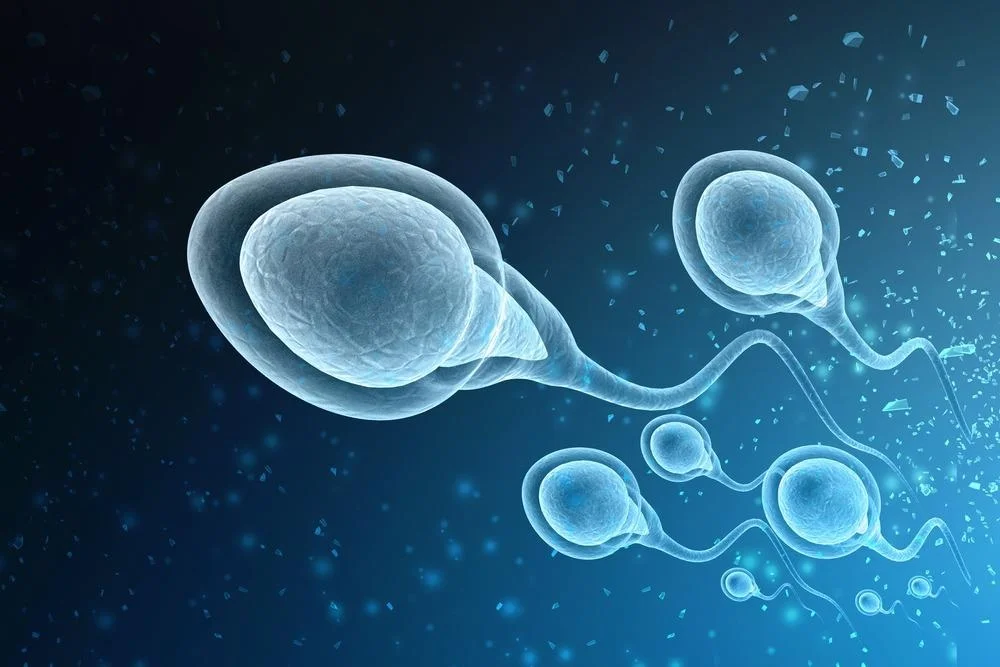
**does the success of the chip technique depend on pre-treatment with vitamins and anti-oxidants?
What distinguishes this technique is that it doesn’t need pretreatment with vitamins or anti-oxidants.
**can the chip technique be used for intrauterine insemination (IUI)?
Yes , it can be used.
** if I had a failed IVF/IUI cycle before, does using the chip guarantee success later on?
There are many reasons for IVF/IUI failure, thorough assessment should be done and if the reason was found to be related to abnormal sperm quality or morphology or increased DNA fragmentation then the chip technique may increase success rate.
** is this technique useful for female infertility related to low ovarian reserve?
It is only used for male partners with low sperm quality, but if the female partner is also complaining of low ovarian reserve then the chip method can be used for her male partner aiming to increase IVF success rate.
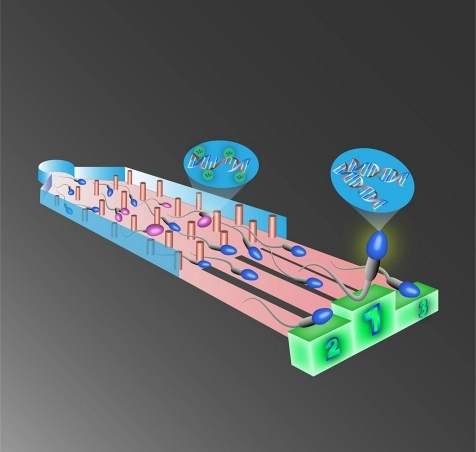
** In case the male partner had normal sperms, can we use the chip method to increase success rate in IVF?
IVF success is increased with better embryo quality, the chip method improves embryo quality hence it will improve success rate in IVF even with normal sperms.
**what about using this treatment for azoospermia?
Unfortunately, this method won’t succeed unless there are normal healthy sperms in the sample as it only sorts healthy sperms from unhealthy sperms.
**to sum up, this method is used to select healthy sperms in order to improve embryo quality and increasing the success rate of IUI/IVF in assisted reproduction without inflicting any harm on the sperms.
Techniques
Microfluidic sorter chips needs to be safe for sperms such that it will not alter their specifications, such as motility, morphology, DNA integrity, and acrosome. This can be achieved using channels and chambers with sperm-friendly size, length, shape, and coatings.
Microfluidic chips for sperm sorting rely on either active or passive methods.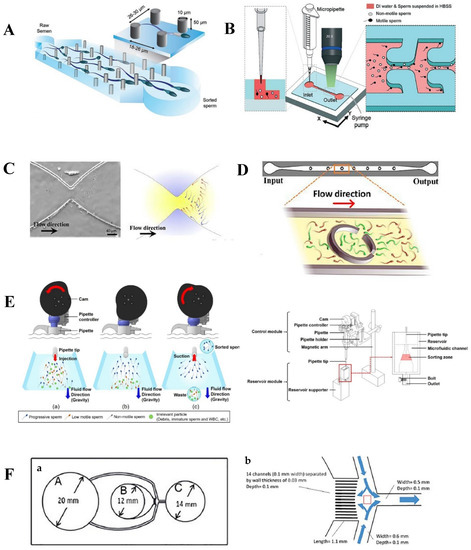
A brief discussion about the most popular active and passive approaches is available in the following section.
- Active method: In this method, external stimulators, such as the heat of chemicals or an active fluid flow, are applied to perform the sorting. These strategies allow for sorting the high-quality and progressively motile sperms.
1.1. Acoustic waves
1.1.1. Surface acoustic wave/Sperm size/Motility pattern: This is an invasive and precise control of sperm selection process. It needs additional equipment. Working time: 50 minutes.
1.1.2. Bulk acoustic wave/Pressure distribution through the fluid /Addition of polystyrene beads: This is an invasive procedure that is used in sexual assaults investigations. It isolates scarce number of sperms from female DNA samples. Need for additional equipment. Working time: 15 minutes.
1.2. Chemotaxis
1.2.1. Progesterone gradient concentration, Sperms’ chemo-attractant behavior: this is a noninvasive. Unfortunately, this is a Low efficiency method.
1.2.2. Acetylcholine and rat oviductal fluid gradient concentration, Sperms’ chemo-attractant behavior: This is a Stationary fluidic environment using Biomimetic strategy and Eliminates rheotactic and chemokinetic behavior of sperms as selection criteria. Like the one mentioned above; it has Low efficiency.
1.3. Chemotaxis and thermotaxis:
1.3.1. AcetylCholine gradient concentration, Temperature gradient, and Sperms’ chemo-attractant and thermo-attractant behavior. This chip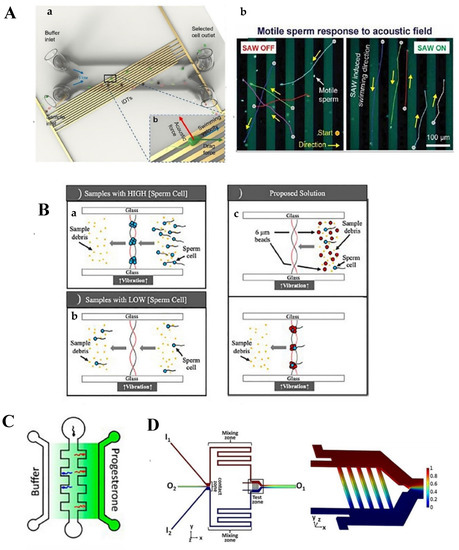 has a Complicated design and fabrication due to complex high-aspect-ratio geometry. Optimized temperature gradient: 0.154 ◦C/mm from 35 to 37 ◦C.
has a Complicated design and fabrication due to complex high-aspect-ratio geometry. Optimized temperature gradient: 0.154 ◦C/mm from 35 to 37 ◦C.
- Passive method: This was developed for high quality sperm sorting. It relies on the inherent behavior and movement of sperms in the absence of any external stimuli.
2.1. Geometry
2.1.1. Swimming behavior of sperms, micro-pillar arrays: It’s noninvasive, less complex structurally, and mimics filtering characteristics of female reproductive tract. In this method there is 5-fold enhancement in morphology, 3-fold enhancement in Nuclear Maturity, and 2-4 fold enhancements in DNA integrity. Throughput: 99%. Working time: 10 minutes.
2.1.2. Velocity shear gradient and Hydrodynamic profile of fluid micro-confinement: This is a Simple working procedure. Retrieval efficiency: 44% increased. Throughput: 80%.
2.1.3. Hydrodynamic profile of fluid within the channel and Fluid flow mechanics, Shear rate butterfly-shape structure: this mimics the variable width of the junctions within the female reproductive tract. It’s a Simple chip design and fabrication. The only disadvantage of this method; is that the accumulation of a large population of sperms in front of the stricture leads to reduced efficiency of sorting highly motile sperms. In this method highly progressive motile sperms swim to the fertilized site while Non-motile and slow sperms accumulate in front of the stricture.
2.2. Rheotaxis
2.2.1. Rheotactic behavior of sperms, Corrals inside micro-channels: Adding sperm retainer is the advantage of this method. Throughput: 100%. Working time: 45 min
2.2.2. Fluid flow, Rheotactic behavior of sperms, and Gravity: This is an automated procedure, fast sorting. This method eliminates the use of additional tools, such as a pump. It’s a simple chip design. One of the disadvantages of this method is that it misses some of the potentially high-quality sperms due to the rapid pace. Working time: 80 seconds. 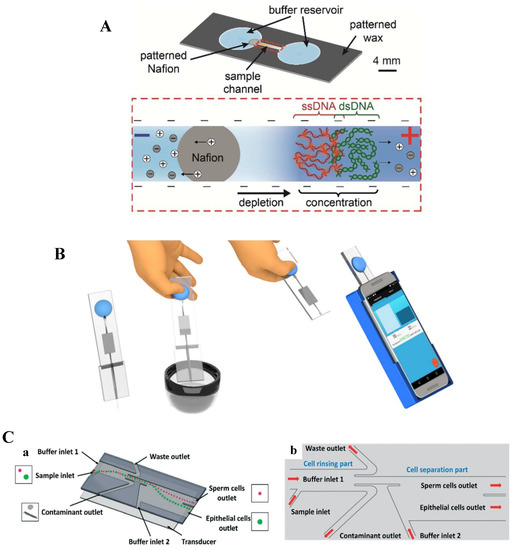
2.2.3. Fluid velocity inside the channel /Designing a diffuser-type channel: It’s a simple chip design. Performance based on continuity equation in fluid dynamics. Disadvantage of this method: Imprecise collection of sorted sperms in appropriate region. Working time: 10 minutes.
2.3. Fluid Flow:
2.3.1. Three different parallel laminar flows with variable semen flow rate: The ability of sperms to cross streamlines in laminar flow mimic the viscous environment of female reproductive tract. This is a simple chip design. One disadvantage is that it might miss some of potentially high-quality sperms due to time dependency of migration in laminar fluid.
2.3.2. Diffuser-type channel with Fluid dynamics production (Enabling cross-passage of sperms through laminar flow streamline): This chip has a complicated design and fabrication due to complex high-aspect-ratio geometry.
After testing different methods in this innovation there were 44% improvement in the efficacy of sorted sperms without affecting their DNA integrity.
Fortunately, this new innovation is now available at our clinic for our ICSI patients.







 Pregnancy Due Date Calculator
Pregnancy Due Date Calculator
 Chinese Gender Predictor
Chinese Gender Predictor
 Ovulation Calculator
Ovulation Calculator
 IVF Due Date Calculator
IVF Due Date Calculator
